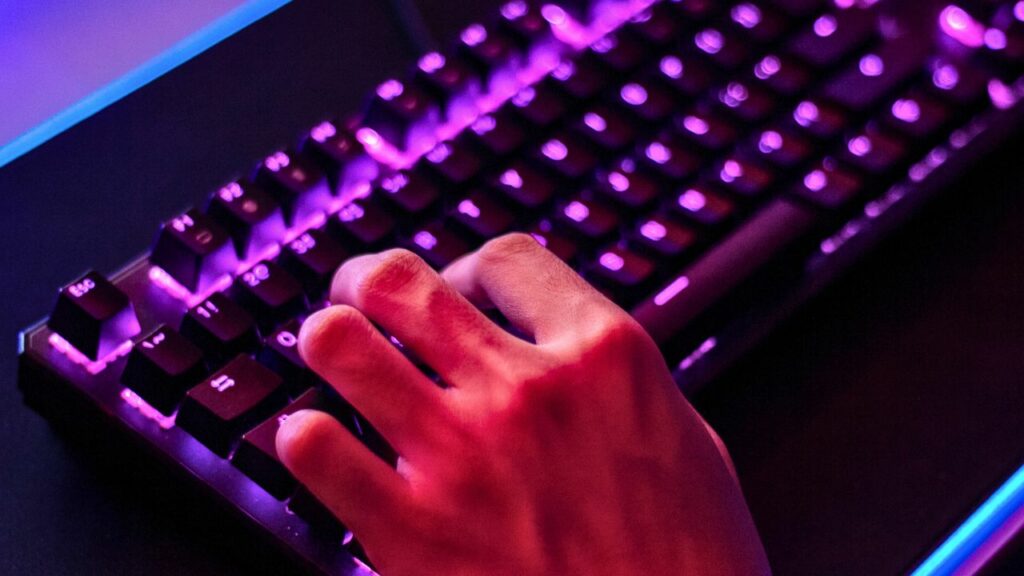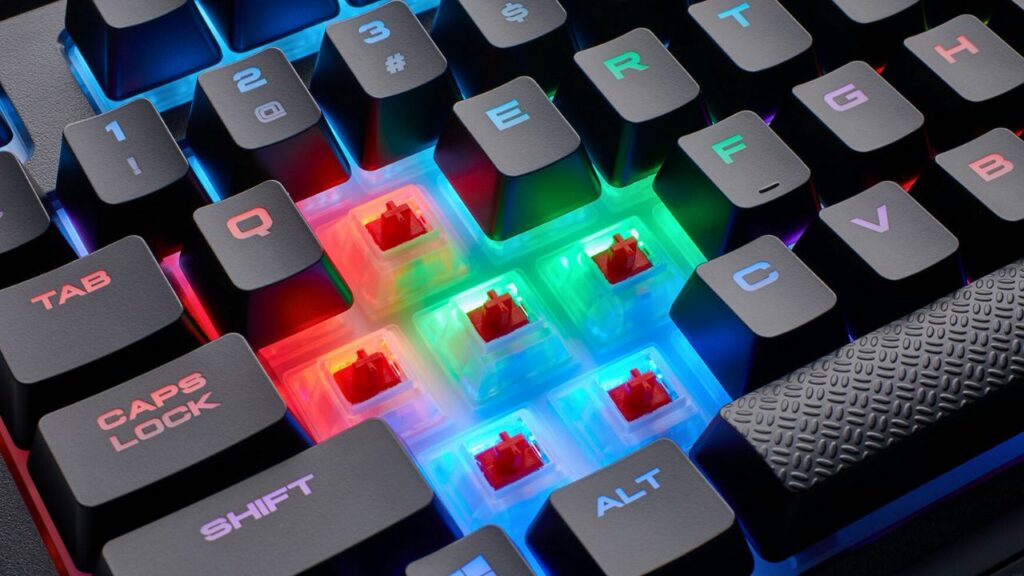
If you’ve ever delved into the world of gaming keyboards, you know it’s not just about the size—it’s the heart of your experience, the switches. Two main contenders steal the limelight here – optical and mechanical.
To the uninitiated, these may appear indistinguishable. But, as you’ll soon discover, they pack significant differences that could make all the difference in your gameplays and daily typing marathons.
Optical Switches versus Mechanical Switches: Understanding the Fundamentals
Optical and mechanical switches are like twins with different personalities. They share a common outer shell of polycarbonate top and nylon casing, but their inner workings set them apart.
Mechanical switches are the older sibling, operating on a principle as old as technology itself: physical contact. The good ol’ mechanical switch operates on a simple principle. When a key is pressed, two conductive materials touch, sending a signal to your device. This method offers tactile feedback and that cherished click-clack sound we all know and love.
Optical switches, on the other hand, are the younger, flashier sibling, harnessing the power of light for activation. An interruption of a light beam is used to register a key press. This results in a smoother travel, a more forceful return, and a hollow feel. While this might lack the satisfying mechanical feel, the benefit comes in speed.
Speed Advantage: Optical All the Way
In the world of gaming, milliseconds matter. Your reflexes need to translate into action as fast as possible, and your switches play a crucial role in this. Optical switches theoretically offer a 5 millisecond advantage over mechanical ones due to their lack of debounce delay and contactless nature. Tests have shown that Razer’s optical switches activate 10-40 milliseconds faster than a standard mechanical switch, depending on the game. With optical switches reacting in .2304 seconds as opposed to .5304 seconds for mechanical switches, this could be the difference between victory and defeat. For a comprehensive review of the fastest switches, visit here.
It’s Not All About Speed: Mechanical’s Tactile Edge
While optical switches may win the speed race, the victory is not absolute. Outside the gaming world, where rapid response times are less crucial, mechanical switches shine. They provide a tactile feel and a comfortable experience that many find ideal for everyday typing. Plus, mechanical switches come in various types, offering more room for personalization than their optical counterparts.
Sound and Durability: A Balance of Pros and Cons
Sound profile is a very personal aspect of keyboard switches. Some love the hollow sound of optical switches while others prefer the fuller, traditional click-clack of mechanical switches. However, if noise is a concern, mechanical switches come out on top, as they offer silenced forms that optical switches do not.
Durability-wise, optical switches hold the advantage. Due to their contactless nature, they have less wear and tear, hitting the mythical 100 million click lifespan. This makes them an excellent long-term investment for heavy keyboard users.
Actuation and Reset Points: Unveiling the Speed Secrets of Optical Switches
One attribute that might seem enigmatic yet significantly affects your typing and gaming speed is the actuation point. This is the point at which a keypress is recognized by your keyboard. Optical switches have an added advantage here as the actuation and reset points occur at the exact same distance. This means the key is ready for the next press the moment it’s activated, resulting in impressively swift response times.
Imagine a runner who can start his next stride the moment his foot hits the ground, without any delay. That’s the kind of speed advantage we’re talking about. This seamless sequence allows optical switches to get the upper hand over mechanical ones when speed is crucial, particularly in competitive gaming scenarios.
Typing Experience: Exploring the World of Mechanical Switches

Mechanical switches, on the other hand, bring a smorgasbord of typing experiences to the table, with different types of switches designed to cater to diverse user preferences. These include clicky, tactile, and linear switches, each offering a unique feel and sound.
Clicky switches, true to their name, provide a distinct click sound when the actuation point is reached. They deliver a noticeable tactile bump, offering a gratifying feedback that many typists adore.
Tactile switches offer a similar bump to signify the actuation point but without the loud click. This subtle feedback delivers the satisfaction of knowing your keystroke has been registered, minus the noise.
Linear switches, on the other hand, provide a smooth keystroke from top to bottom, without any tactile bump or click. This makes them a favorite for gamers who appreciate their consistency and speed.
Each of these types comes with their own actuation force, which measures how much resistance a key switch will offer. From light, fast keystrokes to weightier, deliberate ones, the typing experience can be customized to a surprising degree with mechanical switches.
There’s a switch for everyone, whether you’re seeking lightning speed, satisfying tactile feedback, or a harmony of the two. To explore more, take a look at our comprehensive guide to the best keyboard switches. Remember, the perfect keyboard doesn’t just perform—it should make your fingers dance with joy!
The Bottom Line
When choosing between optical and mechanical switches, there’s no definitive “better” choice. Instead, it’s about what suits your needs and preferences.
Are you a hardcore gamer who needs every millisecond of advantage? Then check out the best optical switches.
Or perhaps you’re an enthusiast who values a tactile typing experience, sound variety, and the opportunity for modifications? Then the world of mechanical switches, including the best linear switches, may be your playground.
Remember, the perfect switch is the one that makes every keystroke a joy, whether it’s a kill command in your favorite game or the last period in your novel. Happy typing!